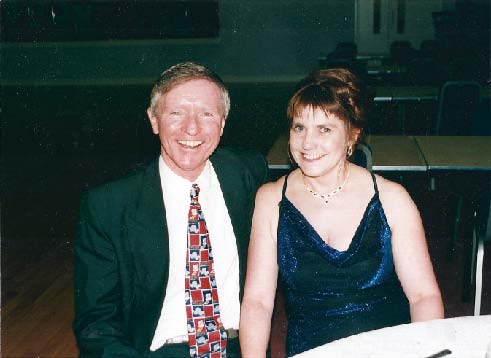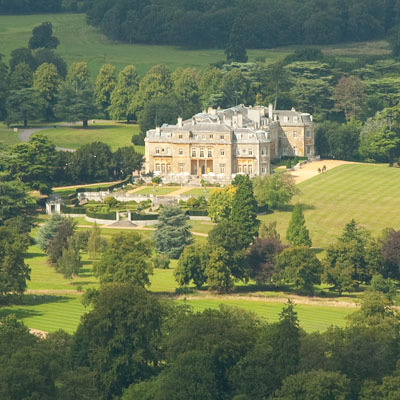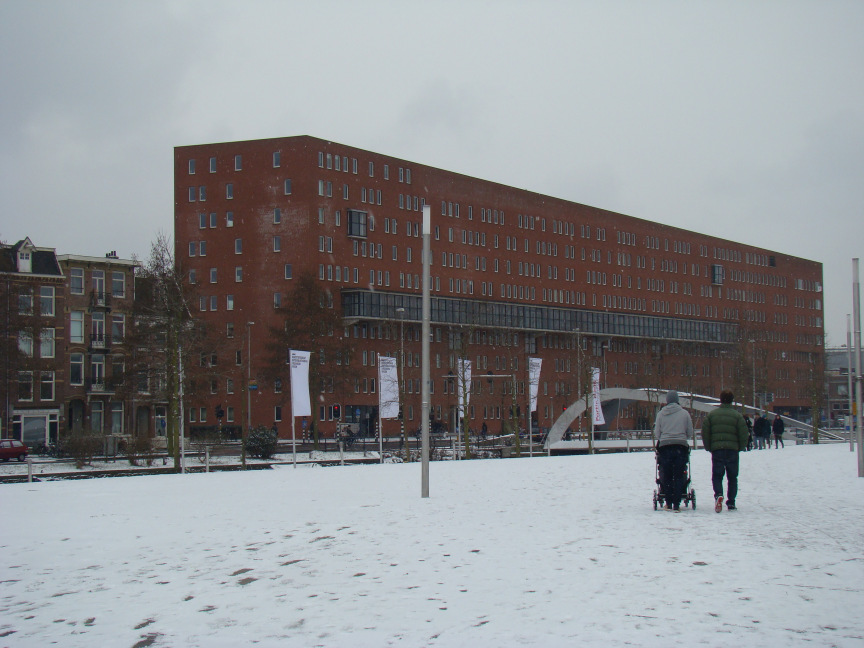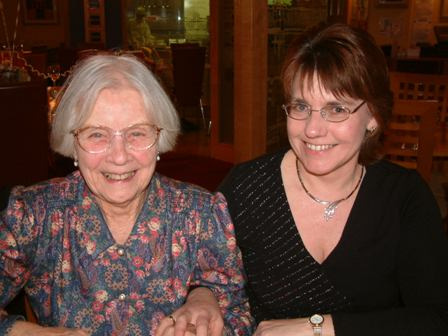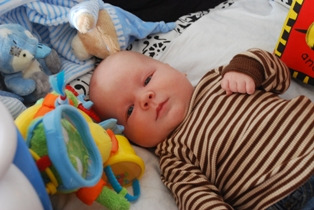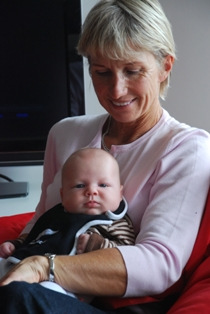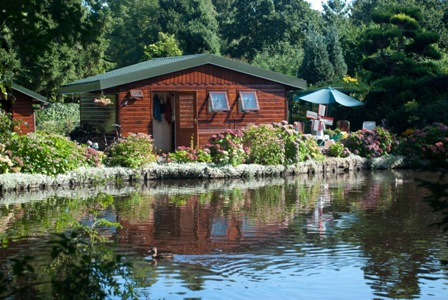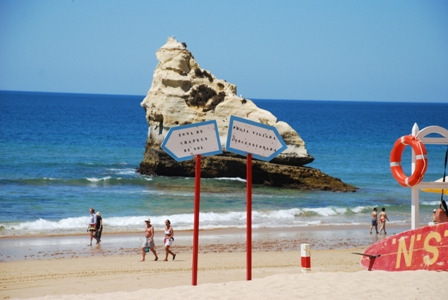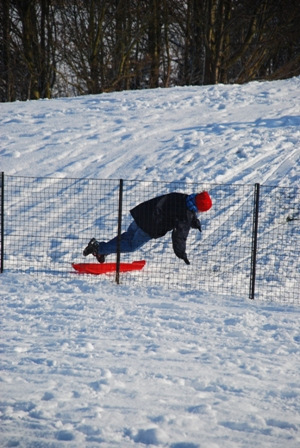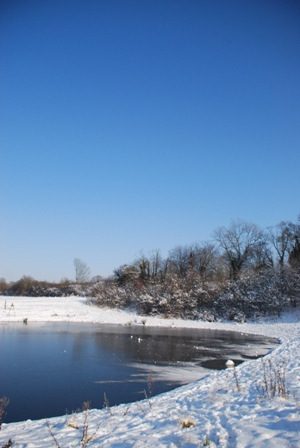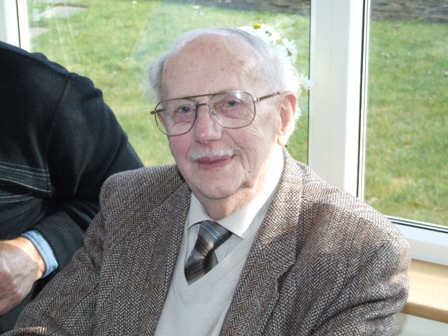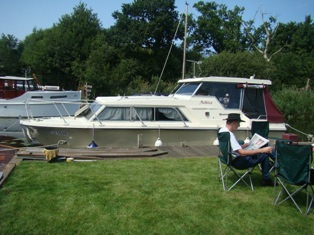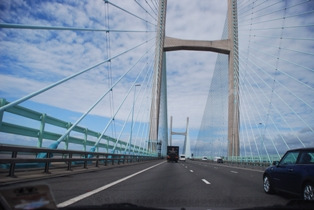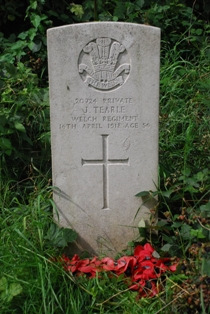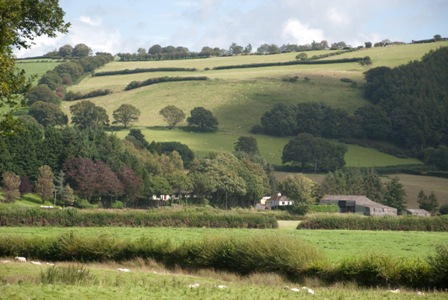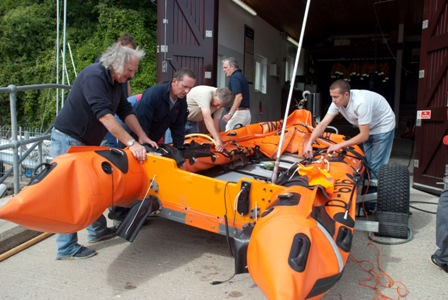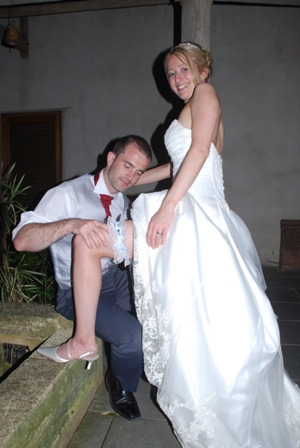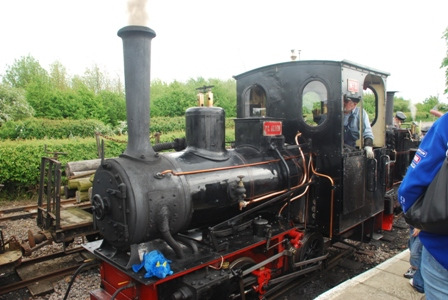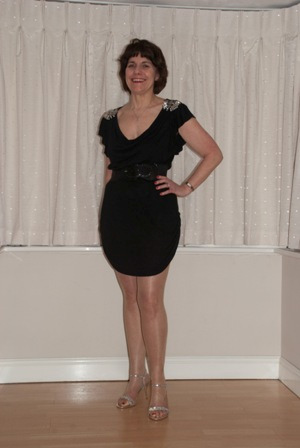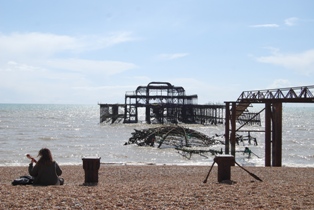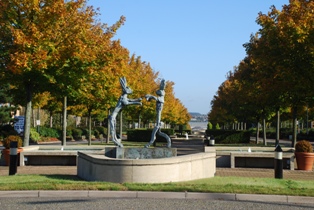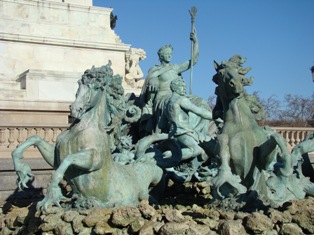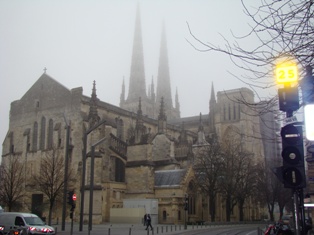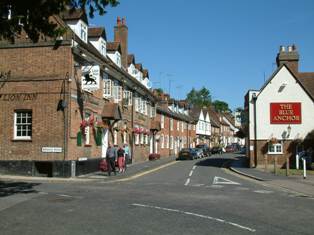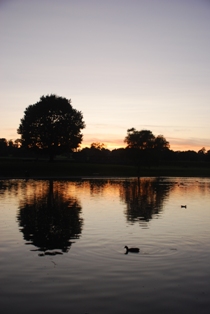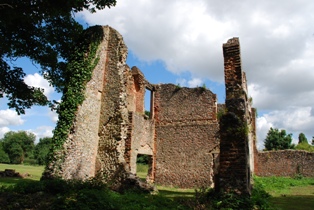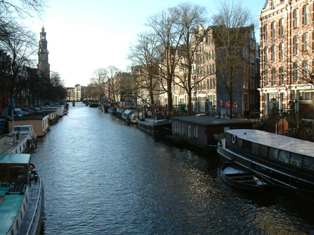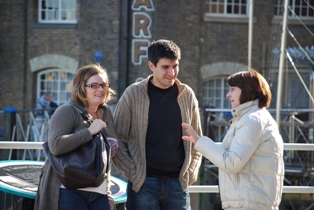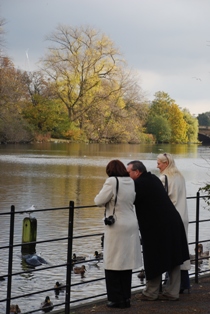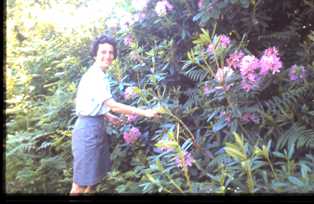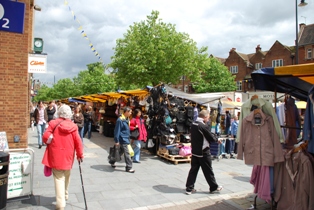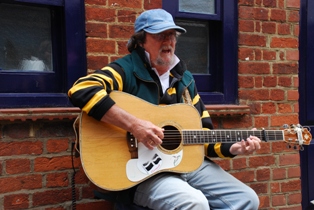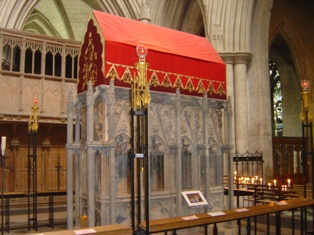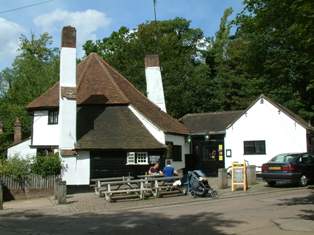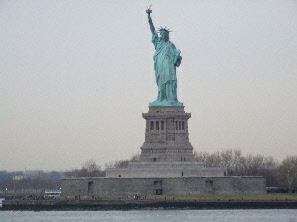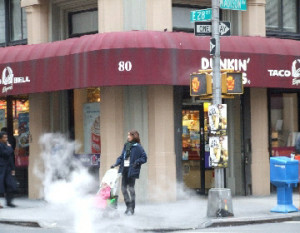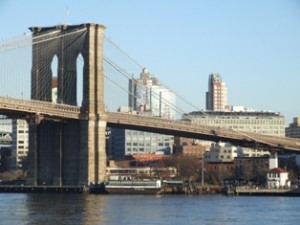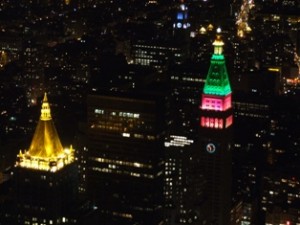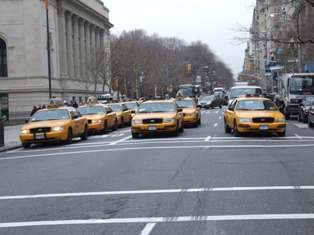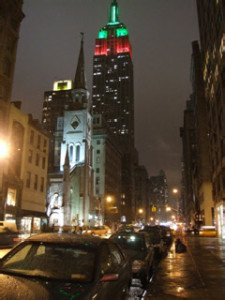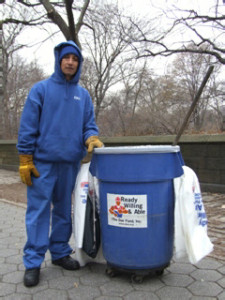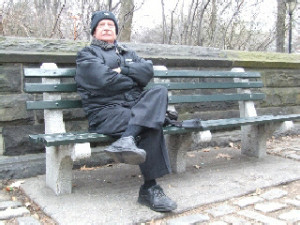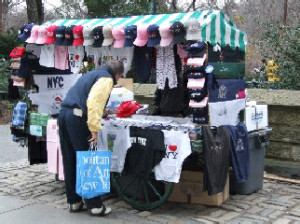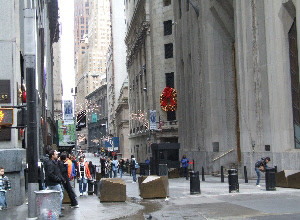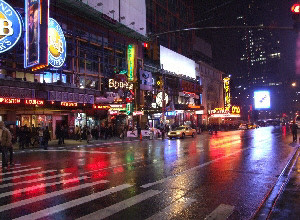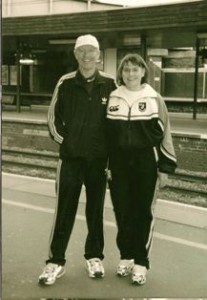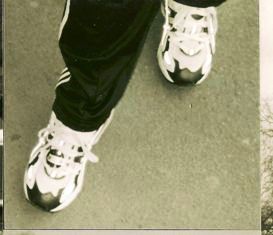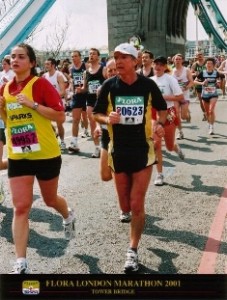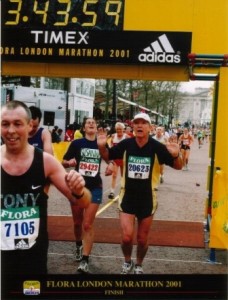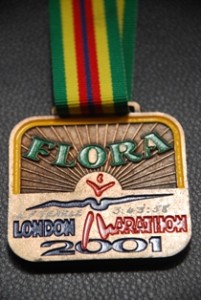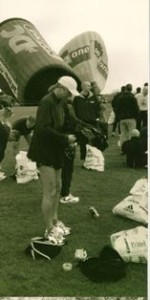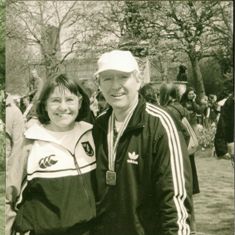All posts by ewart.tearle
Letters home, 2009, Christmas
“Hello, Dad.”
We had visitors, too. Jim and Dos Mark came to see us from their farm near Te Awamutu. We picked them up from St Albans City railway station and we spent a very nice afternoon in the
Letters home, 2008, Christmas
On the week we paid off the mortgage, I lost my job. As part of the ServiceDesk management team, I had been to Brno in the Czech Republic to see how a model Desk ran. They regard these occasions as another opportunity to get as drunk as possible, on someone else’s money. “What happens on tour, stays on tour,” my boss explained. By 10:30pm my boss, the Chief Negotiator and our hosts were working their way through a stash of bottles in a local restaurant-come-pub. “You’re not drinking,” said the Negotiator. “You are making us feel uncomfortable.”
“I don’t judge you,” I said. “I just don’t drink.”
“We can’t get properly tanked if you’re sitting there stone cold sober.”
Back in Capability Green, near Luton, the autumn colours were beginning to grow riotous, led by the acers.
I have to save £34,000,” said my boss, “and it has to come from the Desk. She looked at me sharply. “I can save £54,000 if I cut your rate.”
“No you won’t,” I said.
“If you don’t take the cut, you will be deemed to have resigned,” she said.
I gave her my Blackberry, my laptop and my door key. On the way home I rang cousin Iris Adams. “Come and have a cup of tea,” she said. “It’s always nice to see you.”
The previous Saturday, Elaine and I had walked into the Halifax and paid off the final amount on our mortgage, plus a closure fee, plus release on the deed documents. “How do we get the deeds?” Elaine asked.
“In a couple of weeks Head Office will write to you and ask you how you want them delivered,” said the teller.
“That’s it?”
She smiled.
Outside the bank Elaine said, “We’ve just paid off two houses in our lifetime. And for exactly the same amount.” She took my arm and gave me a gorgeous smile. “What a relief!” She said. “No mortgage. Let’s go and get a cup of coffee.”
I suppose I shouldn’t really start near the end of the year, I should show you the highlights of the year more or less in chronological order.
The first highlight was our trip to Bordeaux which merged the end of 2007 into the beginning of 2008. It was cold, it was dark, it was miserable; and the French were even worse. We took an easyJet flight from Luton and landed early on 29 Dec 2007. The taxi wasn’t at all certain where the Confort Hotel Meriadeck was, but we swept through town in his elderly Merc and after running round the one-way system for a while, we dropped a street level under a bridge and pulled up outside a lift. The cabbie opened the boot, dropped our bags on the pavement and looked at us.
“Ici,” he said.
Some men in overalls were carrying mattresses into the lift, propping the door open as they loaded. We looked at the meter and gave the cabbie his fare. “Let’s try my French,” said Elaine.
“Ou est l’entrance?” she said to the nearest mattress-bearer. He looked at her blankly. “Do you know where the entrance is?” she said, trying the only other language she knew. He said something to the man carrying the other end of the mattress and she came back to me near the luggage. “I think they’re Turkish,” she said.
A short fat man in a grubby apron bustled up and waved the mattress into the lift. “Are you tryin’ to get into the ‘otel?” he asked in perfect Cockney. We nodded. “This is the goods entrance and there ain’t no door, but I’ll take you up to the first floor – that’s reception.”
We crushed into the lift alongside the mattresses and our bags. “Ow long are you ‘ere for?”
“Until the other side of New Year,” I explained.
“Bordeaux ain’t much of a place in win’er. This is wine country and that’s what people come ‘ere for – wine tours. I don’ know if there’s much open.” He hesitated. “Best a luck, Mate.” The door slid noisily back and he leapt out of the way of unfolding mattresses snapping open after being confined in the lift.
“Room 416,” said the receptionist. “If you are going to come into the hotel later than 10pm, please ring reception from the phone in the entrance hall.” She gave us an electronic door key and we rolled our bags over to the internal lift on the other side of reception.
“So how does he talk to those guys?” I wondered.
“In Turkish, I suppose,” said Elaine.
A skinny brunette in a blue hospital smock appeared behind us, followed us into our room and rapidly made up the bed. It was one of those foldaway divans with a metal frame and it took up all the room between the table at one end of the room and the mantelpiece at the other end. With it open, we couldn’t get from the door to the window. She was an expert, punching the mattress in exactly the right place to make the frame cough and fold neatly in two. She slid one half under the other. “You’re doing that from now on,” said Elaine. “I’m not losing my hand to that metal lobster.”
While Elaine hung up her clothes in the wooden wardrobe, I made a cup of tea with a cup from the cupboard and some tea bags near the kitchen sink. No kettle; I took the tea bag out of the cup. I put a couple of tiny pots of UHT milk into the cup, filled it up with cold water and wound the microwave oven’s clockwork control to 2min. There was a powerful smell while the water heated.
“What’s going on?” Elaine yelled. “That smells like burnt toast and last Sunday’s roast cooked into an apple pie.”
“I think that’s exactly what happened,” I explained. “Someone turned on the microwave for an hour to cook a frozen ready meal and just left it while they went out.”
“That smell is truly awful. I hope it goes away soon.”
Someone had stolen my camera from the rack in the train on my way to work a couple of weeks previously, and I felt naked going outside without it. “Take a few shots,” said Elaine generously handing me her Sony, “while there’s still a little sunshine.” The boules players on the Esplanade Meriadeck smiled at me, and then let me shoot their action while they concentrated on the game. At the end of the jardin was an open area containing a stone obelisk wrapped in a large broken chain. This small plot was rather grandly called the Esplanade Charles De Gaulle. We crossed the Cours D’Albert and followed a narrow street past the Hotel de Ville and a skating rink towards the Cathedral St Andre – Bordeaux Cathedral – in the Place Pey-Berland. Two tall, heavily ornamented towers dominated the front of the cathedral while huge flying buttresses swung in arches from the top of the walls down to pillars alongside the church. The gold-plated statue of a saint adorned a tower in a small square behind the cathedral and beyond that was a tramway. We tried the front doors of the cathedral, but they were locked. Traffic swirled all around – on the wrong side of the road, of course. We constantly had to remember where we were and to look to our left for oncoming traffic. They ignored pedestrian crossings, parping at us if we got in their way, although they did stop for a red light. “We’ll get some milk and breakfast things – and some fruit – so that we are not paying too much to eat,” said Elaine. “Keep your eye out for a dairy.”

The boules players, Esplanade Meriadeck
In one of those existentialist moments beloved of the Continental writers, our way was blocked by a river of movement. People were walking past us, left and right, in a solid phalanx and we stood flummoxed, waiting for the tide to ebb. It was like walking out of the Oxford St Tube station. I looked up for the street sign on the stone wall in front of me. Rue Sainte Catherine. It’s the main shopping street. We retreated one street and walked a block to a cosy looking café to re-assess the situation.
“Why don’t we eat? Looks all right.” We walked inside.
A waiter asked us something very rapidly in French. “A table for two, please,” I said.
“Deux?” he asked.
He lead us to a table near the window and I picked up a menu. “Un moment,” he said and left. A young couple with a child smiled shyly at us and sat at the next table; an older couple sat opposite us across the aisle. Another waiter asked the young couple for their order, and then took the order of the older couple. About
Rue Sainte-Catherine
20min later he was back with their orders. He disappeared.
I looked at Elaine, stood up and put on my coat. The waiter re-appeared. “Your ordeur?” he asked. We ordered from the menu and he left. “What was that all about?” asked Elaine.
“If you stand up, then you are taller than everyone else around you, and the house thinks you’re leaving without paying. It certainly got their attention.”
We waited for another half an hour while others, who had arrived after us, were served. “Do that stand up thing again,” murmured Elaine, “otherwise I’m just going to leave anyway.”
Our food arrived and it was poor. The lettuce was wizened and the bread was stale. We ate unhappily.
Outside we braved the Rue Sainte-Catherine again and saw the kebab houses and fashion stores cheek to jowl along its length. It was long, dead straight and absolutely crowded. At one end it opened into a square called the Place des Quinconces that was once the courtyard of a castle, with a huge fountain, called the Monument aux Girondins, of prancing horses being driven by Britannia as the centrepiece of a monument to the Chateau Trompette that stood on the site from the 1400s until 1815. A plaque on the ground explained “For three hundred years, Bordeaux was English…” The chateau guarded the “infidel city” until finally it capitulated and became properly French. At the other end of the Rue Sainte-Catherine was a square called Place de la Victoire with a tall spike, a triumphal arch and a bronze turtle covered in bunches of grapes, bottle corks, bottles and all the paraphernalia of wine-making. The turtle is the symbol of Bordeaux, and wine was the means by which it had become wealthy. The arch was the beginning of the road from Bordeaux to Spain, but I never found out what the spike was for.
As we were walking back to our hotel, we came across a little Moroccan market with carpets (never buy them) lights, ornaments and tea sets. Now, they do know how to make tea and coffee, and in a most original and unique fashion. We bought a brass tea-set and two sets of beautifully decorated glasses. To our relief, they just fitted inside my case.
Even though it was pitch black night, the time was only 4pm. We looked for dinner and some supplies for breakfast. If we took the stairs, we would enter the forecourt of a supermarket that adjoined the hotel. Nice touch. Then we noticed that it was more than a supermarket, it was a mall. There was breakfast food and fruit, some clothes shops, a toyshop, various kinds of eatery and even a small diner. We picked up our supplies and ate at the diner.
The following day was New Year’s Eve and we wondered if anything was going to happen. Perhaps some fireworks, maybe a carnival. We couldn’t find anything being advertised, but we could simply have missed it. We thought we’d head back to the centre of town – it wasn’t very far – to see if we could find out.
We walked past the cathedral and admired its beautiful, sultry proportions in the morning winter mist. Again, it was closed to visitors. Did it ever open?
When we arrived at the Rue Sainte Catherine, we turned left towards the Britannia statue and noted the Café du Pain on our right. “That’ll do for lunch,” said Elaine, “but first, why don’t we have a look in the chocolate shop?”
“The who?”
I hadn’t noticed the brightly decorated little choc shop to our left, but Elaine had already disappeared through the door. A short, but quite beautiful young girl in a black top with a red pinafore gave Elaine her best welcoming smile and offered a treat from a tray of chocolates and bonbons. Elaine bit into one of the chocolates and sat down. “That,” she declared, “is beautiful.” She looked around at the marzipan delicacies, glace fruits and Belgian shell chocolates. Butterfly biscuits and lemon slices with chocolate cake wings sat on tiny shelves attached to yellow walls with gilded carvings. “Good heavens, they are exquisite. What fabulous presentation.”
“Do you like all of this?” enquired the girl, looking up at Elaine through blue eyes behind small square glasses.
“You’re not French. You sound like our friends in the neighbouring flat. Are you Polish?”
“Yes,” said the girl.
“Well, this is beautiful.”
“Thank you. It’s mine.”
“Do you cook all of this, too?”
“Yes, and we make all the sweets ourselves. We have ovens at the back of this store for the cakes and biscuits, but we make the sweets at home.”
We had a couple of her gorgeous cake-ettes and a coffee each and left. “Did you ask her if there was anything going on tonight for New Year’s Eve?” I said.
“Yes, and she didn’t know of anything.”
“That’s ominous. She lives here and she doesn’t know of anything we can go to tonight.” We spent the rest of the morning exploring inner Bordeaux. There was no sense in going to the wineries; the lady in the hotel explained that they were all shut for the winter. They had wine tasting in the summer to encourage you to buy lots of their wine, and did not simply give it away during winter. The mist hadn’t lifted and the cold was unrelenting. We called in at the Café du Pain for lunch.
Sturdy oaken tables with wooden utensils sat squarely with upright wooden chairs. Each table had a candle flickering at its centre and loaves of bread – wholemeal, twisted, French loaves, baguettes and flat unleavened cakes sat artistically on wooden mantelpieces and dressers around the café. Earthenware jeroboams that once may have had wine or olive oil lay carelessly on their sides. A quiet buzz of conversation and a warm, just-toasted scent accompanied us to a table on the mezzanine floor. We looked down on the rest of the café and I felt a deep sense of déjà vue. The waiter who had shown us to our table hovered. “Would you like a drink?” he asked. We ordered the usual and he read it back to us.
“Are you from Amsterdam?” I asked him. He stood bolt upright from having been bending over, the better to hear us. “Yes,” he said, surprised.
“There is a very similar café in the Jordaan.” I explained.
“I know it,” he said, smiled and left. He brought us slices from different loaves of bread that we dipped in olive oil or balsamic vinegar while we drank our coffee, and his soup and Caesar salad were both perfect.
It was two o’clock when we left, but the overcast conditions and the winter season already meant that the street outside was gloomy and approaching dark. “I know we’ve only just had lunch, but what are we going to do for dinner?” I asked.
“We’ll come back here,” said Elaine. She looked at the windows of the café.
“Hmm, no we won’t – he’s closing at 4pm today. Never mind, we’ll go to the diner in the mall. Their food is all right, and at least you can get it yourself.”
We took the long way round the Britannia monument to admire the Christmas lights and to follow the river along to the Bordeaux stone bridge. Elaine spent some time in light drizzling rain to prop up her camera so she could take this quite beautiful picture of the bridge at night.
By the time we had walked the river bank to the end of town, we were well ready for some dinner and a bit of entertainment, if anyone had some fireworks or a New Year’s party to attend. At the hotel, we changed into new clothes, but still warm ones, in case we had to stand outside.
The mall was closed. I checked my watch; 6pm. We looked through the glass doors and there was no-one in any of the shops inside.
“There’s a restaurant in the street parallel to the one we used to get to the cathedral,” I volunteered, so we walked there. It was closed.
We walked back to the centre of town. Everything was closed. Except McDonalds. It was 8pm. There was nothing we could do. We ordered a double mac, a pot of chips, a cup of tea for me and lemonade for Elaine. It was awful. It was horrible. It filled us up was the best you could say.
We walked back to the hotel and watched CBS News (the American primaries) until midnight. We went outside. Not a peep; no fireworks, no car horns, nothing.
On the way home in the plane, we checked our understanding of the state of the world. The best cooking we ever had was Italian – in Venice, actually. We had beautiful food in Prague, in Budapest and in East Berlin. The worst food was in Paris, Nice and Bordeaux. Anywhere in the world, if the advertising for a restaurant says French Cuisine, then it will be expensive, but don’t expect quality. Maybe the French like to give themselves Michelin Stars just to cheer themselves up. One day they might cook ok – if they cared enough to bother.
In April, Doug Davidson came to stay. We had first met him as a very young chap in Piopio – now that’s a while ago. His mum is Mary Venn. He had been on a long trip around South America, and he reckoned he could even speak some Spanish. The nights weren’t too cold so he was happy to stay in our loft and we set up his bed with a blow-up rubber mattress and an electric blanket. He showed us his photos from South America and I collected them all up onto a DVD so he couldn’t lose them and mailed a couple to his mum in Hamilton. Elaine introduced him to Nichola, a beautiful young teacher’s assistant, so he had company for the time he was in St Albans, and a way of seeing the sights and meeting the locals. He was trying to get forestry work in England, but on his tourist visa he had to be sponsored. Trucking and import companies said they would like to have him, but there were plenty of Swedish forestry workers and they couldn’t employ Doug while there were European workers who could do the job. He decided that it would be best to awaken his New Zealand forestry contacts and wait until he got back home. He explored London on several trips into the City and Elaine took him to some of her favourite haunts.
On his last weekend in England we took Doug to the seaside. To Brighton, that quintessentially English coastal town and resort. The ThamesLink train goes directly from St Albans to Brighton with only a few stops. We showed him the Lanes of little knick-knack shops, we walked the pebbled beach from the Royal Pavilion all the way to the old Victorian-built Brighton West Pier. In 2002 the pier had collapsed in a series of violent storms and then in early 2003 it had been killed off by arson attacks and now large chunks of it lay rotting in the sea. A lone guitarist gazed out at the pier and sang laments for his lost heritage while the sea lapped and whispered at his feet. On the Monday, Doug caught the plane back to NZ and we had emails from him and Mary, to say he was home in fine condition.
The long-running tale of 2008 was really about my work. I started the year as a newly-promoted Team Manager and I was very pleased to receive the recognition that I had done a good job. By April, Sainsbury’s was telling us about the re-organisation of Service Management. 13 positions had to go. In July, I found out that one of those positions was mine, and in late August, I was no longer working for Sainsbury’s. It was a bit of a loss after seven years, but these days a permanent appointment is really only a long-term contract; I had been there a good while and I had helped them through difficult times.
I worked for the NHS for about six weeks deploying security software onto all their laptops in Watford. My workmate, Pete B, was a genuine character. He complained that his agency had stiffed him for £1 an hour. “You’re getting £16 an hour, yeah?”
“OK.”
“Well, I’m getting £15 and there’s nothing I can do about it, except get another contract. Anyway, why couldn’t I get Milton Keynes? I live there, don’t I? But some other git from out of town is working it, and I have to ride to Watford.” He made it sound like a swear word. He was ringing the IT agencies, chasing them for work – and when he wasn’t his girlfriend was ringing him. “Are you married?”
“Yup.”
“How long?”
“Well, say over thirty years.”
“Ya what! Tell you, Mate, if she doesn’t stop ringin’ me not only am I not going to marry her, I’ll dump her and move up North, just to get out of the way. Thirty years? The only reason I stick with her is because I love my little daughter.” His mobile rang again. The phone burbled for a while, “Ok, Love, I’ve got the pannier on my bike, so I’ll pick up some milk on the way home. Of course I love you. Bye. Bye. Bye.” He dropped the phone into his leather bag on the floor. “Geez.”
“You had a daughter with her and you still couldn’t marry her?”
“I’ll tell you what, Mate; no-one’s ever goin’ to marry her. What a disaster.”
The phone rang again. “Christain, how are you? How’s the work in Kings Langley?” They spoke for a while and he hung up, laughing.
“Christain says that they have only done two laptops all day. I told him we’d done five already and that there were another five lined up before we finish. He said “I suppose Ewart is your gopher, is he?” and I told him “No, he’s the boss – I’m just the technical lackey.” We are miles ahead of the other teams. It’s the way you sweet-talk the staff here to give up their laptops. Everywhere else, they hide them.”
We had finished almost all of the latops that we had been asked to when I had the offer of the work as Service Delivery Manager in Luton. The year that started with a promotion has ended with unemployment. It’s a funny old world.
We had one other long-running saga this year – our British passports. About two years ago, as we were coming back through Luton Airport, the immigration clerk said, “You’ve got Indefinite Leave to Remain.” She flipped my NZ passport around the better to show me the green sticker.
I said, “I know. We sat in the carpark at Croydon from 2:30am to queue for it. We took canvas armchairs and a little gas stove and made endless cups of tea to keep warm while we waited.”
The clerk grinned. “Many have,” she said. “Why don’t you apply for a British passport? You’ve been here long enough, so you qualify.”
“Is there an easy way?”
“Hmmm, I see what you mean. Don’t forget, the sooner you start the sooner it will all be over.” She stamped our passports and we left her, wondering.
“It’ll ground us for six months!” said Elaine
In May this year, I took the plunge. I went in to WH Smiths and bought the information pack. It consisted of a book called Life in the United Kingdom; A Journey to Citizenship and a booklet called Life in the UK Test; Practice Questions. I took them home. “We have to sit and pass the test first.”
Elaine had a flip though the book, then addressed the questions in the test. “Here you are,” she said. “When was the Council of Europe established?”
“Eh?”
“What percentage of London’s population is made up of ethnic minorities?”
“What do they mean by ethnic?”
A week later she said, “Ok, now give me any test from the booklet.” I photocopied the marking sheet and gave it to her to write her answers on, then took her through one of the sample tests. “What sport is played at the Wimbledon tournament? What percentage of Christians are Roman Catholics? What is the name of the country house of the Prime Minister?” And so on. The pass is 17 out of 25; I ran her through eight tests and Elaine consistently got more than 22. The next day, Monday, I rang the immigration number to book the test. It would be the following Tuesday, at 15:30.
“You did what?”
“May as well be now as in six months time,” I said.
“So we lose our passports as of next Tuesday?”
“No, but we have to apply for citizenship within three months, or re-sit the test.”
“And then we lose our passports?”
“We should get them back by Christmas.”
“Where have I heard that before?”
We studied the book and sat the trial tests many times that week and when we attended the test centre in Luton, and completed the test, the principal gave us each a sheet that had our names on it and the single word PASS. We could go on to the next step.
“I’ve still got a brain,” said Elaine. “I was beginning to wonder.”
I downloaded the form from the Immigration Department, we filled out one each, attached our NZ passports and a £750 cheque and sent them off into the Post Office network. The form said something like “If you sent off your passport in June, we would expect you to have it back by February.” My Christmas deadline was looking uncertain. Our NZ passports ran out in early January 2009 and it might be problematical getting a new one if the old one was completely dead.
I found an Immigration Department phone number that might allow me to plead for my passport. The lady asked me when I expected to travel. “Um, Wednesday a fortnight from today.”
“Purpose?”
“I’m going to Brno for the company.”
“I’ll see what I can do,” she said. In early October, our passports suddenly turned up in the mail. Just in time for me to go to the Czech Rebublic. When I got back, we sent our NZ passports off to NZ House to be replaced. They weren’t any use to us, because we couldn’t go to any European country with a passport that had less than three months left on it.
In a week, they were back, a nice new one each, valid for five years. The old passport still had our Leave to Remain sticker in it, but the corner of the cover was chopped off to show they were cancelled. Elaine delightedly flew off to see Genevieve, going out on the new passport and returning on the old one, to show she still had a right to live here. They made arrangements for us to meet in Amsterdam, to have Christmas in their lovely new flat overlooking Westerpark. It was all coming together nicely.
In early November, we each received a certificate advising us that we were British citizens by naturalisation and we were invited to a citizenship ceremony, which we had to attend within three months or start the entire process all over again, beginning with the Test. I rang the number on the invitation, and we found out the ceremony would be in the Old Court House, in St Albans Rd East, Hatfield, on 24 November at 10:30. We had to register at the desk by 09:30. We were allowed two guests each, so I asked Iris, who had sponsored us to come to England in the first place, and Jill her daughter, the best friend we had. Elaine invited her boss, Mary Weller, the principal of Sandridge School, who had enthusiastically supported Elaine’s work to become a citizen and who had countersigned all the forms that Immigration had given us. John and Liz Stredwick, who had been our friends since Elaine had worked in Goffs Oak in the early years as a supply teacher, were very happy to be there, too. It was a lovely little ceremony of swearing allegiance to the Queen and promising to be good citizens of Hertfordshire, and Britain. Then we all had our photographs taken.
The JP who conducted the ceremony stood by my elbow a short while later.
“I have just sworn in 30 people as new citizens of Britain,” he said. “I checked the roll, and there were 16 nationalities represented.”
“I was fascinated by the wording of the swearing to the queen,” I said, “because it was almost identical to the words I had to say when I signed up to be a teacher in NZ way back in 1966. She was our head of state then, and she still is.”
He paused. “What are you going to do now?”
“I’m going to send off my citizenship certificate so I can have a British passport,” I said. “Then I can live and work anywhere in Europe.”
“And you’d want to do that?”
“Our daughter lives in Amsterdam, so I want to make sure that I can see her.”
“Oh, very good. Mind you, remember not to use your NZ passport for the next few weeks, until you have received your British passport.”
“What’s happened?”
“Now that you are a British citizen, your Indefinite Leave to Remain is void. You can leave the country all right on your NZ passport, but you can’t get back in.”
“How long will we wait for a British passport?” said Elaine, just catching the last of the JP’s sentence.
“About six weeks, I think.” Elaine looked bleak; our trip to see Genevieve and Barry for Christmas now seemed unlikely.
The moment I got back home I filled out the form, attached my passport photos to it and Mary Weller countersigned it for me. I sent off the form along with my citizenship certificate and both my NZ passports. I was grounded again. The result was in the lap of the Gods. A couple of days later, Elaine sent her form off.
We waited.
A week later, my NZ passports returned. There was a letter. I had to attend an interview with Immigration to establish my that my ID, in person, was the same ID as was represented in my passport, and that I matched the photo I had sent them. I had to ring a number to make an appointment for an interview.
“We are now seeing all applicants for new British passports in order to reduce ID fraud, and ID theft,” said the person who took my call. “We’ll just ask you some questions about yourself based on information that you have supplied us, and which is available to us from various sources. Next Tuesday? 15:15? In Luton? Please present yourself at reception 10min before this time. If you fail to turn up, you will need to re-apply for citizenship.
In the end, the interview was straight forward enough, and I knew all the answers. What was my father’s name? What was my mother’s middle name? What was my wife’s birthday? That was a good one – I can never remember.
They don’t tell you the result of the interview at the time, but my British passport arrived in the mail on Friday of that week. Elaine’s process followed the same sequence and her passport arrived on 10 Dec 2008.
It really was all over by Christmas.
Since I had lost my Fuji Finepix S9600 on the train, I was looking for a better camera, but in the medium price range. I always had a problem with both my Fujis not being very secure with their focus. Sometimes they would focus on the foreground and sometimes they would focus on the background. There was no way to control it fully, even in manual mode on the S9600.
The SLR technology that I was used to on the Asahi Pentax camera that I’d bought in my T-Col days had finally become affordable on digital cameras. I went back to the old days to look for a camera that would be certain to have a good range of excellent lenses. I could throw the body away when it became dated, but lenses are where the real money goes, and the technology has not really changed, because the physics of lenses still works the same as it always has. I bought a Nikon D40X, and then later added the 18 – 135mm zoom lens to it. I began to get the kind of quality in my pictures that I was looking for.
I went to the 2008 Sandridge School Fete to photograph what goes on there, as I had since 2004, when I met the parent of a girl who had been in Elaine’s class a year or two prior. We had been to see her sing in local productions.
“Are you photographing the fete again this year?” she said, fixing me with her blue eyes and shock of blonde hair.
“Would you like a copy of the CD?”
“I’d love one, especially if you can catch my daughter.”
“What are you doing these days? I haven’t seen you since the musical night you put on earlier this year.”
“I’m attending acting classes and sending my catalogue to anyone who might be able to help me. In the meantime, I’m the editor for a local magazine called Our St Albans; you know, feel-good stories about local events and local businesses. We have a circulation of about 10,000.”
“Would you like me to send you a few pictures of St Albans that you might find useful?”
“Email them to me and I’ll show them to the boys.”
The reaction to the pictures I sent her was immediate. “The boys” wanted to use one of my pictures for the August cover; could I send her the full-sized file of my photo of Fishpool St? In this picture, you are looking directly up Fishpool street, which in a few hundred metres takes you to the Abbey gateway. You can see the Victorian terraces that line the street. The reason the footpath is so far above to road is to enable a carriage to pull up and the occupants to step down easily without needing a footstool. The pub on the left is the Black Lion, recently transformed into an exceptional quality restaurant called the Savanna. The pub on the right is the Blue Anchor, which serves the usual English ales and pub grub. Behind me is the River Ver, which flows through St Albans, and is why the early town was called Verulamium by the Romans. There was a pond here, fed by the Ver, in which the Abbey monks used to keep fish for their winter sustenance – hence the name of the street. Since then, I have had a picture on the cover of another three issues of the magazine. Here is the cover of the October issue, right. Elaine and I were having a walk around Verulamium Lake in the autumn when the lovely sunset that day let me take this photo.
For the cover of the November issue, left, I took a picture of the Old Sopwell Nunnery on the day I bought my new zoom lens. Henry VIII installed Anne Boleyn here and came to visit her (Hertfordshire was the king’s favourite deer hunting retreat) while he was sorting out the problem he had with being married to Catherine of Aragon, his first wife.
One morning in November, it snowed. That’s quite rare and it created a storm of argument. Global warming was turning the world into the New Ice Age. On the way to work in Luton, I saw that the Childwickbury gatehouse was covered with snow, and just as fortunately, it was bathed in early morning sunshine. The magazine couldn’t resist it for their Dec/Jan cover – winter. A local artist had put on an exhibition in the Childwickbury manor stables and Elaine and I went to see it. That’s when we first saw and admired this lovely Victorian gatehouse. At one time, the manor belonged to Stanley Kubrick (of “Eyes wide Shut”) and Elaine was describing it to her class, she told me, when one of her 6-yr olds said with a sigh, “It’s pronounced CHIDIKBRY. Get it right, Mrs Tearle.”
The picture also illustrates a few of the disciplines of this magazine and its covers. Firstly, it’s in portrait orientation, meaning the long axis is north-south. Secondly, there’s a space below the main interest in the picture to place an advertisement and then there’s more space above the interest to place the magazine’s name. Thirdly, the interest itself has to be immediately recognisable as a St Albans landscape feature. I’m wondering if this might be the opportunity to start another stream in my life. I’m working on it. If you would like to see more of my work, ask your search engine for flickr Ewart Tearle (those exact words, spelt that way) or click HERE. For Elaine’s site ask for flickr Elaine Tearle, or click HERE, while Genevieve’s is at flickr Cor Lems and that’s HERE.
Tearle Meet 2008
One of the most intensive and exciting days this year was TearleMeet 2008, the second of which I hope will be a long series. I asked the Stanbridge PCC (the church governors) if we could have the church for the whole day, this time, instead of only a half day as we did for the first TearleMeet in 2006 and I let the local pub, the Five Bells, know that we would be coming. We had to get in early, because July is the wedding season and the church is booked every day in every weekend for months either side. The reason for particularly wanting Stanbridge is because it’s the first place Tearles were recorded in England, and our record there goes back to the mid 1400s. In preparation for the event Barbara Tearle of Oxford told the story of Thomas Tearle, the silversmith, who worked in London in Georgian times (1750s) and she also had a very impressive collection of pictures of his work.
I spent months on The Tree, as it’s called; the family tree of all the Tearles and their relationship to each other. There are over 2000 names on it, and it stops with births in the early 20th Century. I also put a lot of new information onto my own Tearle family site. The Tree is now so big that the aisle of the church couldn’t contain it. I had to break it into six bits, and scatter it around the church, so that people who were descended from one ancestor in the mid 1700s could find their family on the Tree. Then I updated my booklet on the graves in Stanbridge, so that people could walk around the church grounds and see where their ancestors were buried. In the years since the first TearleMeet, I had been able to identify many of the Tearle girls, so their headstones could be identified as Tearle graves. It was nice to see people walking around, booklet in hand, deep in discussion with each other. I found out that a local chap had lots of Victorian postcards of Stanbridge, so I invited him to show them at the Meet. He made up a Powerpoint presentation of the slides that would be of interest to us, and he gave us a fascinating 1/2hr show.
You can read my report on the day HERE.
I have to report, unfortunately, that Jennie Pugh is not the best these days. She has suffered a series of falls, and while they are not bad in themselves, and have not hurt her, she has decided to move permanently to the Georgiana Care Home near Leagrave Station. If you would like to write to her, the address is:
Mrs Jennie Pugh, Georgiana Residential Care Home, 10 Compton Avenue, Luton, Bedfordshire LU4 9AZ, England.
Her family are in the process of selling her Oakley Rd house. It is very sad; Elaine and I visit her every weekend, and we are hoping that since Jennie is close to a ThamesLink railway station, her sister Joyce Palmer will still be able to come up from Balham in London to visit her. We are working on the logistics of this. It is a nice little care home and Jennie has been happy there before, whilst recovering from an operation last year.
The good news, of course, is that Genevieve is having her first baby late next February. Elaine has already been to see her, but I am looking forward to meeting her and Barry this Christmas. Now that our passports are finalised, I am free to go. From time to time, when we Skyped Genevieve to have a chat with her, we have asked her to turn profile, the better to be able to admire her growing bump. Perhaps that’s not the most genteel thing to do, but you can’t resist asking, can you? She even sent us a copy of the photograph the hospital gave her of the baby’s first scan. Our photo album of Genevieve and Barry’s family has begun.
As you will have guessed from a comment I made earlier, they have moved from their little flat in the Jordaan, close to the canals, to a more spacious 3-bedroom flat overlooking Westerpark. This is close to the Westerkerk so they will still be able to hear the lovely bells, and the chimes of the clock, of this fine and historic 1620s church. She hears the same bells and the same chimes that Anne Frank wrote of in her memorable diary. The picture above is one I took in December of 2002 during our first visit to Amsterdam to see Genevieve, and it’s from a bridge across the canal just 100m from her flat at that time. She and Barry are now living on the other side, from my vantage point here, of the tall church with the blue globe. The picture on the right is one Elaine took recently to show me the view Genevieve and Barry have of the Westerpark from her kitchen window. They say it’s a lovely place to go for a walk, even in winter. It’s certainly a view anyone would be happy to look out on, especially while you’re working on dinner.
We have sent a few parcels of clothes for the new baby (we couldn’t resist) and they have all been in shades of beige (that classic NZ cricket colour) to remind Genevieve of her heritage and to hint of greatness to Barry.
Iris has made a most beautiful fluffy knitted bear, and Elaine has crocheted a blanket that is big enough for a ¾ bed, but if folded in half will make two blankets on a baby’s cot.
In late 1994, Genevieve made a friend on her Spirit of New Zealand sailing expedition. Her name was Angela and her parents live in Auckland. She is still a firm friend to Genevieve and has been to see her often. This year she and her new husband, Gerard, Spanish in spite of the name, came to see us. What a charming couple! What a lovely girl! “Can you show us something new about London? We are coming into London Bridge Railway Station and we’ll be there about 10:00am.”
That’s a challenge. Of course I could. We took them to Borough Market and we had a lamb tortilla and a bottle of fruit juice. We showed them the Globe pub where Bridget Jones had her room in the movie, and then we walked them to Clink Street, past the Golden Hinde and along the Thames River, under London Bridge, through Hays Wharf, past City Hall, under Tower Bridge and all the way to the Design Museum. In Hays Wharf, Angela showed us her strange multi-frame, wind-up camera.
You pull a string from the back of the camera to wind it up then when you push the shutter release, it takes 7 photos in quick succession – on film. While the pictures are being taken you wave the camera about, so that when you print the film, you get a succession of photos that you paste along your wall at home in a sort of lazy, lolloping s-shape. Why not? Very interactive. Very intuitive. She took a wind-up photo of the statue of the Navigator, a huge bronze ship in a fountain, that looks a bit like Jules Verne’s submarine, but with a mast. The picture here is of Angela, Gerard and Elaine having at chat in the late afternoon near the Design Museum, just before we took them back to London Bridge Station and their trip home.
Another visitor, and not for the first time, was Shayne Bates and his family, Lee and Shaun. They had come over from Virginia, where they live not far from Washington DC, to do some business for the company Shayne works for. Our relationship with Shayne goes back to 1984, so he has been a friend of ours for quite a while, and he’s always a welcome visitor. When we were living in Milford Close, he had come and stayed on our divan bed while on various round-the-world trips. They were going to be staying in Lancaster Gate for a week, would we like to stay with them for Saturday night?
I had no idea where Lancaster gate was, but anywhere in London is always a treat. Their flat was near the Tube station of the same name. When we looked on the Tube map, it turns out that Lancaster Gate was on the Central line, so if we took the Victoria Line from St Pancras and changed onto the Central line at Oxford St, we had just two stations to count, and we were there. “Our hotel is opposite the station,” Shayne informed me. And it was; we sent him a txt when we arrived at St Pancras at about 4pm and he and Shaun were waiting for us on the steps of the hotel. And it was teeming with rain. London in autumn, we explained to him, as though he’d never seen rain. We dropped off our bags and Shayne and I wandered round the corner to the nearest off-licence to pick up some drinks for the business meetings that were to be conducted in the flat over the next few days, and Shayne looked at the cigar stand to see what would be nice. “She’s got Cuban,” I noted to him. “They are illegal in the US, so you might like to taste one of those. They’re supposed to be the best in the world.”
“Ah, HA,” he cried. “I’ll turn up at Dulles Airport customs and breathe cigar all over them.”
“Cuban!” I’ll say. “But you’re too late. It’s gone.”
The lady proprietor smiled politely, gave him change for his order and we walked out, chuckling, into the cold and rain.
In the morning, after Lee had made us the most beautiful breakfast of bacon and eggs on toast, I noticed that there were literally hundreds of paintings on the wall along the footpath opposite the hotel. “Come on, Shaun. We’ll go and see what we can make of them.”
As we walked down the ranks of pictures, I explained to Shaun the basics of picture composition, and after a short while he was explaining to me what he saw in various pictures. He had learnt well. Finally, it dawned on me. This was the wall around Hyde Park. Lee, Shayne and Elaine joined us. “Why don’t we have a short walk around Hyde Park?” I suggested. We could see the Diana monument and whatever else is there.”
For the next half-hour the sun shone just enough to give us some of the those magical photos that you can only dream about. The picture here is of Elaine, Shayne and Lee looking over the Serpentine with the park beyond; a seagull on a post keeps an eye on them, and the trees on the opposite bank glow in the late autumn sun.
We spent the rest of the day having a wander around Oxford Street. Shayne was looking for a particular kind of mobile phone that would help him on his future trips to England and Lee and Elaine tried on shoes and dresses, mostly to remind themselves where they were – London -and what time of year it was – almost Christmas. Shaun and I were above all this crass commercialism – we went to MacDonald’s for a chat, and he had a Coca Cola while I had a coffee and we watched the crowds on Oxford St surge past.
I spent many weeks this year digitising Thelma’s slide collection. It was a project she had asked me do for her, and after her death, Martin dropped the boxes off for me to see what I could do. Many of the slides were at least 40 years old and the media was in poor condition.
It was a labour of love for a dear friend who Elaine and I still often talk about. The pictures, though, were a revelation and gave us a view into a hitherto unseen world, when Millie (Thelma’s mother) was young and beautiful; when Thelma herself was very young, slim, attractive and vivacious. We saw Martin as a baby and his father George, and we saw the marriage of Thelma’s sister, and pictures of the cottages in Wing with their living gardens and the people we knew in them, as long ago as the 1960s.
Most of all there were the pictures of Thelma’s holidays – sometimes in Cornwall and sometimes in France or Italy. There were even photos of her on the deck of the Queen Mary en route to New York, along with slides of New York, the Niagara Falls, Canada, Los Angeles and Washington. I know they are grainy and the paint is faded, but the impression they give is as vibrant and as imperative as the day they were taken. It was a privilege to do the work.
I took the entire digitised collection to Thelma’s brother Dennis in Bedford and we spent several hours on my laptop identifying as many of the people as Dennis and Betty could recognise, and as many of the places as we could deduce from the context and their probable age. In the end, I copied all the files to DVD and Elaine and I met Martin in the Travel Lodge near the M1. Martin is an engineer on the narrow gauge railway in Leighton Buzzard and every few weeks he goes there all the way from Warwick and drives the train for the weekend. He has to do it often in order to maintain his engineer’s ticket, but for him it’s a love bordering obsession. He was very happy with the completed DVD and to see his mother’s precious boxes of slides.
Jimmy Mark and Dos, our very good friends from Te Awamutu, came to see us in July this year. Something to do with a cruise from Southampton to New York. He is the farmer who leases our 13-acre block in Otorohanga and he met Sheila, Thelma and Clarice when they came out to NZ in 1994. They sat on the deck in the sun watching Jimmy race around the paddocks on his tractor, doing what farmers do. He was working at such a pace (he always does) they called him Hurricane Jimmy. I must say that he doesn’t seem to have slowed down much, even after the last fourteen years. We picked them up from the train station in St Albans, and we took them to the local market, held every Wednesday and Saturday. As you can see from the picture, it’s a lively scene with all kinds of things for sale from these outdoor, canvas-roofed stalls.
Jimmy wanted an England flag and on a whim picked up a very nice grey tweed hat. Nothing outrageous; he looked very cool. From here, you can walk all the way through the market, to French Row, through the Waxhouse Gate, down past the cathedral, around Verulamium Lake and on to St Michaels for a waffle lunch at the Kingsbury Water Mill. That was the plan. When we got to French Row, we introduced Jimmy and Dos to John Breeze, who has played folk songs on his guitar for somewhere over twenty years, always on this very spot, raising countless thousands of pounds for charity during that time. His daughter is Michaela Breeze, whom you saw weightlifting in the Beijing Olympics earlier this year. “So you’ve come to commiserate with Ewart now that he’s English and has to support the wrong team?”
“It doesn’t matter,” said Jimmy. “He’ll still be able to support his team against the French.”
“This is called French Row because we beat them, not the other way round,” said John, grinning, just in case Jimmy was referring to his singing address. “So why do you have an English flag in your hand? Not thinking of changing, too, are you?”
“No!” laughed Jimmy. “My neighbour’s English, so when we beat England on our tour in October, I’ll fly this flag at half mast, just for him.”
“I’m Welsh, so you are welcome to beat them,” he said. “We’ll give you a good run this time.”
“You can always try.”
John went back to his singing and we carried on down French Row, past the Medieval clock tower and through the Waxhouse Gate to the cathedral. We took a diversion through the cathedral because Jimmy and Dos had never been through it. They admired the Roman bricks that had been used to build the enormous crossing tower that dominates the building, and noticed how long the nave was. We walked right through the very impressive Norman building listening to a simply lovely choir, and we called in at St Albans shrine to light a candle in memory of our missing loved ones. It’s not that any of us are particularly religious, but St Albans Cathedral is a building of heroic proportions and has such an impressive interior, that you take the opportunity to commune, just a little, with deeper thoughts and more sombre memories. The whole place has a real sense of just how ancient it is. There was a shrine to St Alban within living memory of his death, and it is said that a spring arose from the place of his execution, hence the name Holywell Hill. This has been a holy place for at least 1600 years, and all that history is steeped into the stones of this beautiful cathedral. The choir finished its song and we moved off down the hill to the Fighting Cocks pub.
“See the round bit, Dos? That’s the cockpit, where the fighting roosters were set onto each other.” We walked through the pub and looked over the handrail into small the octagonal room below.
Pictures of colourful roosters with sharp brass heels looked down from the walls.
“Down there?” she said.
“You stood up here and laid your bets, the handlers set the roosters onto each other, and the winner took the money.”
“Amid plenty of blood, I suppose.”
“True. I wonder, though, what we do today that would horrify them, but we just take it for granted?”
We crossed the River Ver and walked to the Kingsbury Water Mill along the banks of a quiet, shallow, little stream. “River Ver,” said Jimmy. “River?”
“Unfortunately, sixty percent of the flow is sucked out of it before it gets here,” Elaine said. “Drinking water, factory water and irrigation.”
We had a beautiful meal at the Mill, which has been transformed by a South African couple into a restaurant that made waffles as the basis of all its dishes. The Kingsbury mill was mentioned in the Domesday book. “In Saxon times, they only worked daylight till dusk,” I said.
“Go on,” said Dos, suspecting more.
“They had candles for light, and the flour dust in the mill was highly flammable.”
“Bang,” said Jimmy, looking around.
The weather was bit fragile and it was cooling down, in spite of being in the middle of summer. They had other appointments to meet and a ship to join, so we took them back to the railway station for their trip to London.
It’s always nice when you have Jimmy and Dos for company. We thought back on their unstinting hospitality when we were last in NZ, and the wonderful time we had spent with them on their farm.
I have an update on the flag. Dos has sent us a picture of Jimmy, in his grey tweed hat, standing alongside a flagpole outside his house, with the English flag flying. “Why is it at half mast?” I asked Elaine, who had opened the envelope. She looked at the letter from Dos.
“In commiseration with his English neighbour who has just lost an important rugby match,” she said. “Unfortunately, this time, more than one. But they just can’t seem to beat the All Blacks.”
We had gone to the Old Albanians Rugby Club rooms to see the England v NZ match, and we were two of the entire crowd of three voices raised for the All Blacks, in a room of hundreds who were yelling for an England win.
Maybe England will win next time, then. Or perhaps the time after that…
That seems to be a rundown on the major things we have done this year. It hasn’t been, shall we say, a golden year, but it has had some memorable, and even milestone, moments.
I know that Genevieve and Barry will join Elaine and I in wishing you a very Merry Christmas and hoping that the New Year will bring you happiness and prosperity.
Our very kindest wishes to you.
Ewart and Elaine
St Albans
Dec 2008
New York, New York
Letters home, 2001, Graeme
Greetings from Graeme, 2001
So good to hear from you again. Shirley is trying to fatten me up, but I don’t mind. The effort is doomed to failure in spite of the excellence of her cooking. I warned her “You can’t fatten a thoroughbred”. Some people just can’t take a hint. They have to try.
Your time for the London Marathon is awesome. I told the guys at work. They found it difficult to believe my ELDER brother even ran a marathon, never mind the time. Mum and Dad are both very proud of you too. I saw them last weekend.
I took Shirley up to Pauanui for the weekend and stayed at the Pond’s beach house. It is so good to be able to use the place now that Hahei is no longer in the family. I am not sure how much longer Allan and Alison are going to be able to keep it. Allan sounds weaker every time I talk to him on the phone. I mowed the lawns for them and Shirley cleaned the windows. We had a great time, drank a lot of Karlee’s coffee, played minigolf and pool and had dinner at the Sports Club, and almost took the ferry to Tairua on Sunday, which was Mother’s Day, the official excuse for being there.
The ferry Timetable did not suit, so we drove round with flowers and a card for Mum and a Bible! for Dad. They are both in good health although a little vague. Mum is inclined to be a bit weepy and Dad’s Parkinson’s is getting worse. He is now in almost constant motion; even when he is sitting still some part of him, mostly his face, is still moving. Mum was vey glad to get your card. It had pride of place on her dresser.
Abby and Geoffrey are both doing well at school. Abby has started high school and Geoff intermediate, and both are regularly coming home with commendations, Abby with excellent results for projects and Geoff for being an all round good guy. It is very encouraging.
My own job continues. This boat is a long time in the building, but I am determined to see it to the water. We are told that the builders will be allowed to go along on sea trials, but I will believe that when I see it.
Near the end of your letter you mention that one of your English workmates asked you to tell him about his own country. Funny that isn’t it that we take our own back yards so much for granted. I still have not seen the South Island, a situation I intend to rectify this Christmas. I am sure that the most casual visitor to Godzone could tell me things about The South that I have never seen. Shameful really.
I hope you guys are both well and you find a new job soon.
Have fun and God bless you and keep you.
Fondest regards,
Graeme.
Letters home, 2001, London Marathon
Dear Mum and Dad
Just a short note to let you know that I’m home safely after running the London Marathon this morning. My time is sub-3:45:00, meaning about 3:44:10hrs. I had hoped for a sub 3:30:00 but I just have to accept the time I’ve got. It’s not a bad time for 54-yr old running his first marathon, and his first London Marathon at that, after only 3 years and 3 months of any sort of running. And I’ll tell you what, there were an AWFUL lot of people behind me! When I was running past the 21 mile mark, with Tower Bridge just in front of me, I could see lots of people just passing the 13 mile mark, and no sign of the tail of the competitors. They had taken nearly 3 hours to get half-way and they still had a long way to go .
London being what it is, and the trains being in the condition they are, we couldn’t go directly to London Bridge Station and then off to Blackheath. We caught the train from St Albans to London Bridge, but just before Kings Cross Station we were told by the train driver that due to engineering work, he wasn’t stopping at London Bridge and we’d have to get off at Kings Cross and find another way to Blackheath. Up to that very moment we’d had assurances from the rail people that all was in order. We got to Blackheath Station near Greenwich Park after having to miss three trains because they were all full, but only with 10 minutes to spare before I had to throw my kit onto the back of the truck that would take it to the finish for me. It was a close thing, and Elaine said there were lots of people who actually missed the start and had to run through the assembly area just to catch the field.
It’s quite a flat course, a little downhill if anything, and very pleasant to run on those roads. All the way it was jammed with runners, I always had to be careful where I ran so as not to trip up or be tripped, but at least half a dozen people in front of me went down. None of them looked hurt, but it would be a difficult thing to recover from completely.
It must have been quite a cold day, because when I drank the water from the bottles that were handed out nearly every mile, I thought they must have taken the bottle from the fridge. It really chilled my skin when I threw some water over myself. However, the weather made very good running conditions because I never once felt over-hot, it was just a nice comfortable temperature all the way round.The beautifully soft and very light running suit that Genevieve had bought for me made such a difference, too. I’d never worn anything before that was so light and so comfortable.
During the 12th mile, we crossed Tower Bridge and that was a real highlight. There were lots of people watching and a wonderful amount of noise. At the 13 mile point, there is a short section of road where I could see the leaders of the marathon passing the 21 mile mark and heading for the finish. I saw Teargat, who was second, and Antonio Pinto, who was about 5th. Paul Teargat was running his first ever marathon and I heard he’d finished second. Not bad. It was just fortunate timing that I saw them. Any later or any earlier and I’d have missed them because the section where the homecomers could see the outgoers is quite a short stretch of road.
The very, very worst part of the marathon was mile 23. The course seems endless and the pain is awful. I told myself that I would never walk. No matter how slowly I ran, it would still be faster than walking and I was also absolutely sure that if I walked, I’d stop. I have never walked in a race before and today wasn’t going to be the first time. It could have taken another hour to get to the finish. At mile 25, there is no mile 26, just the finish 1.2 miles away. When I saw Buckingham Palace on my left, and passed the Victoria Memorial as I rounded into The Mall, then I finally felt that nothing could stop me. I could see the finish clock in front of me and it was about 3:42:00 and I saw 3:43:55 as I crossed the line, so that’s why I think my final time will be about 3:44:10-ish. But well under 3:45:00.
I crossed the finish mat that recorded the time from the chip on my foot, then I stopped. After that, it was all agony. I could hardly walk, every step was an effort and I was gasping from the pain. I had to walk up a little ramp to get the chip removed from my running shoes and then I had to walk down the other side, clutching onto the railing. A lovely lady put the London Marathon finisher’s medal round my neck and gave me a quick peck on the cheek and someone else swung a space blanket (it’s a blanket made of very warm, shiny material) round my shoulders and I limped down the whole line of The Mall to find the truck with my kit bag on it. Someone gave me a goody bag of London Marathon stuff with a t-shirt, some sports bars, some drinks and an apple. Just as I found the truck and collected my kit, Elaine and Karen yelled enthusiastically from behind the tall wire fence that kept the runners’ area secure. It was a terrible effort to sit and get changed and an even worse effort to get up. I was very impressed that they had managed to find me with all those people milling about, but they had gone looking for the numbered truck with my kit in it. Very intelligent.
We walked to Trafalgar Square and down the tunnel to Charing Cross, from there the train to Leicester Square for Kings Cross and from there … Home. People on the trains and in the tunnels who saw my London Marathon medal (of course I wore it home! And I’m taking it to work at Tesco tomorrow, too) engaged me in very pleasant conversation, commiserated with me on my agony and charmingly commented on my time.
During the week I had lots of phone calls from our English friends and family, including Thelma, Roland and Jennie. We also had lots of lovely emails from friends and family in New Zealand and Genevieve rang a couple of times as well.
Ivor Adams rang to see how things went, Roland rang to see how I was and Ivor’s daughter, Jill and husband Dave, came round to see us and to swap jokes with the cripple. I’ve had emails of encouragement this morning from friends in Te Kuiti, Otorohanga and Hamilton and Nick and Sally Trout from Warnham sent one, too. I also had an absolutely beautiful card with encouragement, and lots of stickers, from Karen before we left this morning. I have had a wonderful day.
Elaine’s view of the London Marathon while Ewart did the hard job of running it.
The main marathon event began for me last Wednesday when I went to London on Ewart’s behalf (armed with signed authority, ID, and a list of tasks to complete) to collect Ewart’s gear bag, computer chip, runner’s number etc. The fun really began on the tube sitting at Charing Cross Station on the Jubilee Line waiting for the Docklands Light Rail. It was the first morning to collect such articles and people were arriving from all over to find London Arena, just like me.
I wore my new Canterbury tracksuit, bought in NZ for me by Ewart especially for the marathon and my NZ All Blacks t-shirt. On the platform apparently I looked like someone who knew where I was going because English people kept asking me for directions. It was quite a laugh really but I met some lovely people this way and we travelled on the trains together, chatting about the marathon all the way and going our own separate ways on arrival.
The Arena was easy to find – it’s in the Docklands area of London where huge and very impressive expansion projects are going on. On arrival the 2001 Space Odyssey music blasted forth and that really set the tone for a great day. Everything was really well organised so getting Ewart’s gear (through several steps) was very simple and that left my day free to enjoy the marathon exhibition and enjoy it I did. At the end of the day, after some shopping for Genevieve at Canary Wharf, I dragged my very weary body home ready for the days ahead.
The first of those days was quiet and just required providing the right sort of foods at the right times for when Ewart needed them and having a quiet rest – you know, marking, stuff like that.
Saturday was market day, so I had to get the right foods, cook at different times to get the right amount of food in and make final arrangements with our special neighbour, Karen. There were lots of emails and phone calls wishing Ewart well and with all the cards sitting about, our flat was quite festive. Followed by an early night.
THE BIG DAY
The marathon went really well. We got up at 4.50am and made ourselves ready to go. Karen arrived here at 5.45am and we headed by car for St Albans station, travelled by Thameslink train to London … and then the fun started. We intended to travel direct to London Bridge station but just short of Kings Cross the driver came on the intercom to say that due to engineering work, this train would not be stopping at London Bridge. We would have to get off at Kings Cross and go to London Bridge via the Northern Line. The Northern Line is the furthest walk through the tunnels of any of the lines at Kings Cross so we set off at quite a pace so as not to use up valuable time. We waited on the platform with lots of other people, white plastic gear-bag in hand, heading for the marathon.
After about ten minutes a voice came over the intercom telling all the marathon people to head for the Victoria Line because the Northern Line was closed. We went to the Victoria Line platform and waited; the train was late, then the one that did come was full and we couldn’t fit on. We waited for the next train while time ticked by. We caught the next train to Green Park, then more walking through tunnels to the Jubilee line and caught that train to London Bridge. Then we had to go to find Connex.
Once there we ran into all the other people (hundreds by then) who had been caught by the train problems. We stood on platform 5 and watched the first three trains come and went and we couldn’t get on. I met one man who told me he had started north of us at Hertford. He had sat on that station for 15mins with other runners, finally to have the intercom tell him that no trains were going from Hertford to London that day, despite his having checked with the railways the previous day. He had had to ring his wife to drive him and a group of runners to St Albans to catch our train – and be there by 6.24am! Most of the trains from London Bridge could only take a few people because the trains were full before they got to us.
London being what it is, and the trains being in the condition they are, we couldn’t go directly to London Bridge Station and then off to Blackheath. We caught the train from St Albans to London Bridge, but just before Kings Cross Station we were told by the train driver that due to engineering work, he wasn’t stopping at London Bridge and we’d have to get off at Kings Cross and find another way to Blackheath. Up to that very moment we’d had assurances from the rail people that all was in order. We got to Blackheath Station near Greenwich Park after having to miss three trains because they were all full, but only with 10 minutes to spare before I had to throw my kit onto the back of the truck that would take it to the finish for me. It was a close thing, and Elaine said there
Finding a loo was fun. We found some for the athletes but the queues were horrific so Karen and I decided we could wait. Just…
We wished Ewart well and just before the 9:30 am start time headed back to Blackheath Station. We couldn’t find the start line anyway because there were thousands of people (plus tens of thousands of runners) and large hot air balloons as well, including a couple we recognised from the Hamilton Balloon Fiesta. We found a nice coffee shop and rested there for about 1/4 hour. During that time, the race had started and some time later we saw runners still arriving with their gear bags and running to try to catch the start.
From what we understand, the start area was so huge that there were runners starting when the leaders reached the eight-mile mark. For the London Marathon everyone’s time is counted
from the start gun regardless of whether you make it over the start line very quickly.
Karen and I found the station and joined the queues for trains to the underground once more. We decided to go via Victoria, so we flagged the train to Charing Cross because it was too full anyway. When our train was due the announcer came on to say our train would be ten minutes late. We were beginning to get used to this and started to laugh. Others on the platform looked sideways at us and Karen said, “Welcome to England!” We were both dressed as Kiwis but Karen’s mum is Irish and her dad English. We were just having a fun day out.
On arrival at Victoria we had similar adventures but finally found a train to get us to Tower Bridge where we hoped to catch Ewart at the 13 and 22 mile points as they were opposite each other. We didn’t find that place immediately, because there were far too many people, so we grabbed an ice ream and went to the end of Tower Bridge, next to the Tower of London – and found a great atmosphere there anyway. We had to stand on tip-toe for a long time checking out every runner with a white cap heading towards the half-way mark.
I finally spotted Ewart. We screamed “GO EWART” at the top of our lungs then headed back to the underground for our next adventure. Out came the map and we decided to head to St James Park, arriving by The Home Office. Once there we found we were just 800 metres from the finish line and fortunately Karen spotted a gap in the fence so we could be right at the front. We could see at last!!! We’d felt REALLY SHORT until then, though. We stayed there for about 1 1/2 hours looking at every white cap, yellow and black strip etc. Our eyes hurt and streamed and we cheered on anyone who got into difficulty or who looked interesting. Finally we spotted Ewart and screamed at the top of our lungs again. People around us looked at us VERY STRANGELY. Then we took off towards Buckingham Palace.
Here it got really crowded and it was very difficult to get through the crowd. We caught a glimpse of runners from time to time and photographed the beautiful tulips in the palace gardens. I also saw the plaques for the Diana Princess of Wales Walk in the pavement. From here on the going got really difficult and we could only go a few paces at a time whenever the crowd would let us through.
We found the finish line on The Mall and watched people finishing, being awarded their medals and getting their computer chips removed. As each runner finished they were wrapped in a reflective, metallic-looking sheet, called a space blanket, to keep warm. I spotted the numbered trucks where we had earlier deposited Ewart’s gear and knew just which truck his would be in, so we headed for it.
We had to stay beyond the perimeter fence and we took photos of things we thought Ewart would want to see afterwards. We spotted Ewart quite quickly and called to him, taking a photo of him with his medal and space blanket. We waited for him to change then we walked parallel with him until we could be on the same path. He was very stiff and sore by this stage, but very happy. He had finished the marathon in 3 hours 44 minutes. It was a fantastic time for a first marathon, in fact for any marathon.
We were REALLY proud of him. We walked at his painful and very delicate pace to Trafalgar Square and then through the underground tunnels to Charing Cross station. People were happy, chatting to each other, showing medals and comparing times. It was really great to be part of and fortunately the train trip home was much less eventful. At St Albans station a couple of black guys who worked at the station called to Ewart to see his medal and made him and us feel really special. They were so happy and excited just to share Ewart’s triumph with him. We finally got back to the flat at 4pm, very tired but extremely happy, kind of high really.
Since then it has been all celebration. Dave and Jill had driven up from Ashtead to see Ivor and Iris and they called round see us. That was a lovely surprise and a perfect way to wind down after a big day. There were lovely emails and phone calls to follow, yesterday and today – from everywhere. Ewart has had a great day with his work mates today and I with mine. Ewart took his medal to work today and he got a great reception. None of them knew he was running. Tomorrow it goes with me to school. The children knew he was running and are excitedly waiting to hear how he got on.
It was a wonderful adventure for us all. For me, I am pleased to be the “gopher” and “spectator” but none the less a participant. For Ewart it is one of the greatest achievements of his life. Thanks for your support. You made a big difference to the last two years of training for this event. Genevieve was wonderful: she phoned us, wrote lots of encouraging emails and bought the lovely running suit that Ewart ran in for the race. It was truly a great family day for us.
Lots of love
Elaine
Results:
Time: 3:43:58 hr Place: 6453 Finishers: 33,000 Starters: 44,000
The London Marathon is a world event, so that puts Ewart in the top 20% of marathon runners world-wide.
Letters home, 2001, Dec 17
17 December 2001
Dear Mum and Dad
The Stuart Turner catalogue is on its way. I called in at the model shop in St Albans and they said Stuart Turner doesn’t deal through shops, he markets direct so I thought I’d look on the internet and he has quite a useful site there, with a phone number to order his catalogue. I spoke to a nice young fellow there and he said he’d be happy to send a catalogue to NZ, so it’s on its way. I don’t know if it’ll take a week or three weeks, but it’s all paid for and done n dusted. Pleasure me old mate. Hope you have lots of fun with it. You can order the parts you want through his fax number, which will be in the catalogue.
Our trip to Cyprus starts on Wednesday morning, so since it’s Monday night here now, we’ve only got TWO SLEEPS until we’re on the way. The travel agent contacted me a couple of days ago to say that our departure time has been delayed until 0955 because they (Britannia Air) are putting on a much bigger plane. It means we don’t have to get up so early to be at the airport 2 ½ hours before departure. We have paid for our car to be garaged at the airport so we can drive there and back and not be at the mercy of somewhat erratic train schedules.
Looks like I do get a final chance to give you a big Christmas Greetings – we went up the St Albans Cathedral and lit a candle for Jas. We also remembered that the Christmas we spent with you in your house before we came to England was the second-to-last Christmas you had in your Hahei house and we remembered all the work and the fun we had helping you get the building started. I think very few people have made of their retirement the adventure and the challenges you made of yours. We salute your courage and your enterprise and we admire the home and the community you made in Hahei. The years we spent going to see you each Christmas, with your reciprocal visit to Pauanui for New Year, were magical times and we are deeply grateful we could share them with you.
We have put some bright and sparkly snow crystal lights in the window which will come on at 5:00pm with the Christmas tree and our security lighting and we have given our valuables and our keys to the care of Ivor and Iris. So we are all ready for Christmas and we’ll be able to see how the Orthodox Greeks celebrate Christmas in Cyprus. We are so looking forward to this new adventure.
We do hope you have a very happy Christmas.
Love: Ewart and Elaine.
Letters home, 2001, Dec 9
9 Dec 2001
I’m absolutely delighted that Joni went to see you yesterday. It sounded on her mobile as though you had a very good visit and it was very nice to hear you on the phone. When she called me from outside the home she said she was standing near the harbour and I could hear all these birds singing in the background. It was quite remarkable. You don’t hear birds singing like that here very often. The robins go berserk in late winter and early spring and they sound wonderful. We can also hear a few larks in the summer, but mostly we hear only the raucous squawk of the ravens and the dreadfully monotonous two-tone call of those bloody pigeons from as early as 4:00 in the morning, when the dawn is that early. The only time you can hear birdsong is when you are walking in the local patches of forest.
Just before Ivor went into hospital we went to see the local production of Chess at the Arena Theatre. The St Albans Operatic always put on a very good show. The lead singers are imported professionals but the cast are hardened locals. Chess is quite a good show, with the music written by Bjorn of ABBA fame. I don’t think he made a particularly good job of the music since much of it is monotonous bouncy stuff intended to get the words out rather than a song or songs as such.
The best two pieces are in the second half – Bangkok and I Know Him so Well, the song Elaine Page made her own. I didn’t know the song is actually a duet. The hero is a chess champion and the game in Bangkok is a re-match; the American girlfriend and the wife sing this song just before the wife marches him off in triumph back to Russia. It’s an interesting enough premise – when two players are equal in ability and talent, sport is about gamesmanship, not the game. Therefore what goes on behind the scenes will heavily influence what happens on the field of play. Nothing new there. Two good songs in the second half and some nice voices to listen to.
A word about the murder of Sir Peter Blake. We were very upset to hear that a man whom we admired a great deal had been killed by pirates in Amazonia. The local press (eg the Guardian, The Times and the Evening Standard) all called him the “Legendary British yachtsman Sir Peter Blake.” New Zealand born, you see. We thought about that for a while, but eventually decided that in order to write a meaningful story about him you have to find a local connection and after all, Pippa and the children do live in Hampshire. I wore my All Blacks tie to work. It’s a black tie with a silver fern on it and it was sufficiently different from my usual colourful computer ties for people to ask me why I was wearing a black tie. He was a remarkable and courageous man and we shall not see his like again. New Zealand and the whole world are much the poorer for his leaving us.
Since New Year is coming up, I ought to give you a bit of a confession: I don’t run any more. A few weekends after I finished the London Marathon my legs fell off. I can walk ok, but I can’t run. It’s an Archilles injury in both feet and I feel pretty embarrassed about it. Still, I suppose if one goes from being a smoker and a couch potato to running a sub 3:45 marathon in just three years, you may have to pay for it and it looks like I am.
The only thing you can do with an Archilles injury is wait until it heals, so now I go to the gym with Elaine. I use the rower, the kayak, the stepper and the crosstrainer as the main equipment and on Sundays – as today – I spend about 1/2hr on each. I’m hoping I can run in the Garden City 10mile in September next year, so I’m not going to do any running at all until about April, when I’ll start working on the treadmill.
I suspected it was too early to try the marathon, but the opportunity presented itself and I just took it. I am still immensely pleased with my London Marathon medal; it’s one of those things you have to work very hard for and once you have it no-one can take it off you. There aren’t very many people with a better time than mine, and I still haven’t met one. I enjoy going to the gym because after the training session Elaine and I go to the steam room and then have a soak in the spa (which they call a Jacuzzi here) so it’s really rather civilized. We go to the gym three or four times a week and you can see the changes it’s made to Elaine. She really does look taller.
The last thing I have for you is the news that we are going to Cyprus for Christmas. The office co-ordinator at accenture asked us what holidays we wanted over the New Year period and Elaine has been dead keen to go overseas (abroad, as they say here) for part of her winter holidays. On Thursday of last week I finally got the email to say I had four days off from the 19th – three days, then the weekend, then the Monday, then Christmas.
I rang round lots of travel agents and they all said, “Not now, you can’t.” Yesterday morning I called in at our local travel agent in the Quadrant, the shopping centre for Marshalswick (our suburb, of which Jersey Farm is part) and he had THREE holidays I could choose from. I could have Alicante, Madeira or Cyprus, all within our budget, including accommodation and all with flights leaving on the 19th and returning on Boxing Day.
I went round to the hairdressers to see Elaine and we agreed that we’d had a holiday on the south coast of Spain, so we’d give Alicante a miss, Madeira is mostly England “over there,” so we thought Cyprus sounded suitably exotic and we plumped for that. Since then I have found out that Cyprus is an island in the Mediterranean, it’s a Commonwealth country and has a history going back to 7000 BC. There are castles and old cities and Greek and Roman remains. It’s the home of Aphrodite, it has deep clear blue seas, the winter temperatures are about 16 degrees C, most people there speak English, they ride on the left side of the road and you can drive around the island in about 3½ hours. New Zealanders don’t need a visa. We should have lots of interesting things to do and see.
Since we are leaving in 10 days time I doubt I’ll get the opportunity to write to you again before Christmas. I that case please accept the warmest Season’s Greetings from both Elaine and I. You know that we’ll be thinking of you, about our family and all our friends in New Zealand. Merry Christmas.
Lots of love
Ewart and Elaine
Letters home, 2001, Dec 3
3 Dec 2001
Dear Mum and Dad
Ivor is improving every day. We went to dinner at their place last night and Ivor ate everything we did, although not as much, and as far as we could tell enjoyed the meal and had no after effects. He doesn’t go back to hospital for any tests for a couple of months yet but he is in good heart and certainly looks much improved. He was absolutely delighted to get your Christmas card, which we delivered last week, and it was one of the first such cards he got.
We put up our Christmas tree yesterday. It’s the thing, here. You do your Christmas decorations on 1 Dec. The shops and the daily advertising have been full of it for the past couple of weeks, of course, but the beginning of December is when you start to see the decorations go up in people’s houses and see the lights flashing in their windows. We didn’t do anything particularly startling this year because I just stood last year’s tree up and put last year’s decorations on it, as well as last year’s lights. I did, however, get a snow blanket for the tree. This is a length of thick, white, woolly cloth and you cut it up and crumple it on the ground around the foot of the tree to make it look like the tree is standing in thick snow.
I have set the little Dickens doll under the tree and she looks absolutely gorgeous in her copious red overcoat standing under the street lamp in the deep snow singing her carols from the song book held in her green mittens. I shall get a battery for her shortly and we will be able to hear her singing from amongst the presents Elaine has set under the tree. When we went to Ivor’s I saw that he has some coloured lights flickering bravely in his living room window and everyone in the street walking past can see them. I must do that; it’s all very well having lights flashing on the Christmas tree, but coloured lights flashing in the window are de rigeur. We have a timer that turns on small lights in the living room at 7:00pm and I’ll rig the tree and window lights up so that everything starts at the same time.
We have now come to that time of year when it’s dark at 4:30pm, long before we start coming home and just getting light at 7:00am as we scrape the frost off the car before driving to the railway station. I have no idea why the English insist on having outside parking for their cars, with very few houses having a garage or even a carport. Actually, since I’ve touched on the point, the one topic the English talk about more than the weather is transport. Everyone has to get to work, almost no-one can walk to work, so almost everyone relies very heavily on the transport system to get them to work. The system is heavily overloaded and it is groaning and cracking under the pressure.
Everything is overloaded – the roads are choked such that a single accident on any motorway can cause a 20 mile four-lane tailback within half an hour, the city streets are nose-to-tail with cars and lots of parked illegally on double yellow lines because finding a park is so difficult. Cars weave in and out amongst the parked cars in a way I’ve only ever seen done in England. It’s like this; if there are no yellow lines to prohibit you from parking, you can park – anywhere. This often means that streets wide enough to allow only one car in each direction get cars parked on both sides of the road, usually half-way across the footpath, with a corridor wide enough for just one car. If there’s a car already in the corridor, then you wait until that car, and all behind it, have passed through before you can go forward.
The trains are fully crowded, at least at peak periods, with most of the train-load standing, and very few trains now run on time because a whole generation of under-funding and under-investment have left the track and all its infrastructure breaking down many times a day everywhere, all over the country. The train traveller going to work pays the most expensive fair of the day, and generally has to stand for the whole trip. The buses are hopeless; on time for a bus is that time 5 minutes before until 5 minutes after the time on the timetable. Here in Jersey Farm I’ve had to give up using them because at the time I want to catch one, about 6:30 am, they far too often don’t arrive at all. So with an overloaded road system, an overloaded train system and a bus system that doesn’t arrive for the working person, it’s very difficult to find a way to get to work that isn’t almost as stressful as work itself.
The neighbourhood I work in is that part of Southwark called The Arches. When the London to Dover railway was built from Blackfriars Station through Southwark it was on an elevated platform about 30 feet off the ground and it left behind a real forest of brickwork arches and within them is a darkened underground mini-world. Lots of the arches have been boarded up and provide rented accommodation for small businesses with narrow alleyways following the bridge above to give access to the doors cut into the boarding. In one particularly densely arched area there is a permanently manned car-park of about 200 cars. It’s like gangster alley: Mercedes, Alpha Romeos, BMWs, a Ferrari – that sort of thing. If it was parked on the street it might be attacked, or perhaps the owner likes to keep it here so the tax-man doesn’t know he’s got it.
Just down the road from 168 Union St is the house that Mum’s grandmother, Helen Hinkley, lived in so this is the neighbourhood in which she grew up. It’s full of dark brick buildings and 3-storey warehouses and with all that coal smoke from hundreds of Victorian brick cottages in the neighbourhood, each with a coal-fired stove in the kitchen as the only source of warmth, it must have seemed a very dismal, cold, damp place to a young girl growing up in poverty in Bankside. Add to that the noise and smoke from the railway overhead, the constant rattle of wagons delivering goods to the warehouses and the clip-clop of horses hooves it would have been noisy as well as smoky, dismal, cold and damp.
Add to all of that the open sewers and the horse manure all over the road and it would have been smelly, noisy, smoky, cold, dismal and damp. Just the place you’d want to leave; I don’t blame her. Today, you can only see where this neighbourhood has come from, it’s not like that at all to be here now, but on a cold, misty morning walking to work from Blackfriars through The Arches to Union St, it’s not hard to visualize how the Victorians lived in Southwark.
I have just bought a book called The Magic and Mystery of England by Ivan J Belcher because it had the Bridge of Sighs in Cambridge and a Morris dancing troupe on the cover, while there was a photo of the fishing boats drawn up on the beach at Hastings on the back. Now that I’ve got it home to read more closely, it’s even better than I thought; the man who wrote it likes lots of the places we’ve been to. Look at this list just for the time we have been here.
St Paul’s Cathdedral. We have both been inside and stared at its majesty and grandeur. Every day, I see it as I go to and from work over Blackfriars Bridge and every day I marvel at its simplicity and its elegance. The chief mason to Sir Christopher Wren, and who helped build St Paul’s, was a St Albans man who is buried in St Peter’s Church on the main road in St Albans
The Chiltern Hills. These are the hills that wrap around Tearle Valley and across which runs the Ichnield Way, picking carefully the dry route all the way from near Norwich almost to Henley-on-Thames.
Ilfracombe Harbour. It has a 30-foot tide, smugglers caves carved into the mudstone cliffs and beautiful little stone cottages clamped to the hillside overlooking the town and the harbour. We went there several times to see dearest cousin Clarice.
Tower Bridge, London. I took Genevieve’s photo in the late afternoon light from the Embankment with Tower Bridge right behind her. It’s a lovely photo. I was also given the privilege of running across it during the London Marathon earlier this year.
The Radcliffe Camera is a circular stone building in the heart of Oxford and is actually a library of which our cousin Barbara is the Head Librarian – the Bodleian Library.
The Magdalen Bridge, Oxford. You hire a punt and go punting down the river, gliding under this 18th century stone bridge. Magdalen College was built by the Bishop of Winchester – he of Winchester Palace in Southwark with The Clink in its basement, which I walk close by every day.
The Houses of Parliament just down the road from where I work
King’s College in Cambridge with that fantastically beautiful chapel in its grounds, begun by Henry V1 and not finished until Henry Viii.
Christ Church, also in Oxford, with its most beautiful Norman cathedral.
Clapper Bridge, Eastleach, Gloucester. Two parishes, two little Norman churches, not more that 200m apart, one either side of the clearest trout stream I have ever seen, crossed by a small stone bridge that is centuries old. The bridge is made of slabs of stone piled up and topped with a horizontal slab. Very simple but very strong. It goes by the name of Keble’s Bridge. The village is made of old stone cottages with two very nice large stone farm houses and a most beautiful stone pub, where we had lunch. Elaine’s family comes from Eastleach, that’s why we went there.
The Grand Union Canal near Soulbury, Bucks. Not far from Tearle Valley, this canal was part of the backbone of the Industrial Revolution and these days long thin, brightly painted and decorated canal boats still potter slowly up and down the canal, opening and closing the locks as they go.
Shakespears’s Birthplace, Stratford-upon-Avon. We’ve been there twice and had a tour through this house. Stratford is a charming town, but Warwick has a lot more genuine Tudor buildings and is much more authentic in feel.
The Tower of London. We went through there and I had a go at the warder about the Princes in the Tower. I said the Tudors had turned on the publicity machine to blame Richard III and he said, “It was Richard III.” I saw I wasn’t going to win with that line, so I said it was his fault, that he was the jailer and he had let his charges be taken away to be killed illegally, knowing it to be illegal and therefore collaborating with the murderer. We glared at each other and then he turned to the much more polite lady next to me at the counter.
Churchill’s grave, Bladon, Oxfordshire. This is quite a site. There are families of Churchills and Spencers, here. Winston Churchill has a big stone monument in Westminster Cathedral, but he is buried in this little churchyard in a village not far from Blenheim Palace, just outside Oxford.
The Horse Guards, Whitehall. On a warm, sunny day we watched the horse guards sitting still on these tall black horses. Whitehall is a wide street linking Parliament buildings with Trafalgar Square. When the Horse Guards change watch there is quite a ceremony, but when the men dismount, they are very stiff and sore young men indeed.
Morris Dancing. We have several morris dancing troupes in St Albans and the city often hosts Morris dancing meets and competitions during the May celebrations. There is a lot of drinking and a lot of fun and many of the troupes come from the Continent – more in the tradition of country dancing than actual morris dancing – but lots of fun for all that. When we were visiting Redbournebury Mill a troupe turned up and it was there we first met Martin, the St Albans Town Cryer.
THE places in London: Regent St, Oxford St and Harrods in Knightsbridge. Famous for their lights at Christmas time. Famous for their shopping and their shops. Trafalgar Square, Picadilly Circus, Covent Garden Market.
Big Ben. People usually call the tower or the clock Big Ben, but it’s actually the name of the 14 tonne base-tone bell that tolls the hours. The man who designed the clock was our own St Albans lawyer Edmund, Lord Grimthorpe. He also paid for and restored the St Albans Cathedral so that the building we see and visit today is the result of his work. Some of the Victorians were remarkable men with huge amounts of energy and unbounded ambition and skill.
Fishing boats drawn up on the beach at Hastings. One of the first experiences we had of solidly, determinedly traditional ways of life. Elaine got second in the run to be the marketer for The Stade – the heart of this traditional fishing industry – but you don’t get any prizes for being second. They didn’t want someone not English to do it.
Buckingham Palace. This was the end point of my London Marathon and it’s always somewhere our visitors simply MUST go. Outside the gates is the monument to Queen Victoria and the two huge statues facing the palace were given by New Zealand.
Knebworth House. There are lots of gothic pillars and bits tacked onto the outside of a very large Tudor house not very far from here. We have been there twice and have driven past it lots of times. Knebworth House was used for the filming of Batman and it has beautifully laid out and well attended gardens and grounds.
Hampton Court Palace. We went on a trip there down the Thames with Ivor’s daughter Jill. Christopher Wren did most of the work on it that we can see today, but the house is internally a Tudor building and majestic in its own right, though you wouldn’t really call it a palace, more a grand country house. The gardens are just wonderful.
Warwick Castle. Joni and I went there on a trip we did to Rugby and Stratford-upon-Avon. It’s a magnificent building, owned these days by Madame Tussaud’s, started by William the Conqueror, with large round towers at the corners and a commanding view along the Avon River. Joni and I explored it for a couple of hours just before it closed for the day and there’s a tableau set up through several rooms of a visit by Winston Churchill when he was a young man. We were very impressed with the town itself. Thelma’s son, Martin, lives there.
Hedge Laying. Some of the hedgerows in England are over a thousand years old, including one near us, along Jersey Lane. The hegderow maker partially cuts through the shrub or branch and then bends it more or less horizontally, laying the next shrub over it and so on all along the row. The top part of the hedgerow is tied with prunings. The hedges are usually kept about 5 feet high and the resultant woven hedge is stock proof without a single post except for those necessary to make and swing the gate.
Bluebells. One of the most dazzling and magical sights you can ever see is the carpet of bluebells under the slightly greening trees in woodland open spaces in early spring. It is impossible to describe it and the effect is much too subtle to photograph because although you can see the massed display of blue flowers covering the ground, what the photo cannot catch is that the very air is turned blue. There is green at your feet and the view gets progressively bluer, the further away from yourself you look. The carpet looks about a foot thick and seems to float in the air.
The daffodils at Waddesdon Manor. Waddesdon was the very first Great House we visited in England, a Rothschild mansion. Our cousin Alec, Thelma’s brother, took us there. We’ve been back to the village a couple of times and the last time there we bought a delightful copper and brass Victorian bed warmer from the antique dealer there, who knew the local Tearle brothers. The daffodils cover very thickly some fields directly in front of the house and are a thick sea of yellow in spring. Around us in St Albans there are long stretches of highway and city roads which are lined with daffodil yellow that have been planted by the council over many years.
Swans. All the white swans in England belong to the Queen. On our own River Ver, very close to the cathedral, and out on Lake Verulamium, the white swans glide around and will accept bread from your hand if they feel like it.
Ashridge Forest, near Tring. Thelma took us here for a day out quite recently. The huge Gothic house here was built on the site of a 13th century monastery and it was here that Elizabeth I arrested her sister Mary. Most of the trees here are beeches, native to England since the Ice Age. The seat of the Rothschilds was here at Tring Park and we have also visited the Zoological Museum in Tring. Thelma said that she and her cousins, including Jennie Pugh, used to walk and run through the trees and along the paths in this small forest when they were young. Thelma is particularly proud of her association with Ashridge Forest because it is owned and managed as a nature reserve by the National Trust and Thelma is a long-time active member of the NT, including working in this forest park.
Letters home, 2001, Nov 23
23 November 2001
Dear Mum and Dad
Just a very short note to let you know that my contract has been extended to end of March 2002. We are both very pleased because some of the contractors did not get their contracts extended, and since there is an increasing number of permanent staffers on the helpdesk team, accenture’s need for contractors is becoming less. I’m a bit lucky, I think, but I’m also really pleased because it shows that accenture/Sainsbury’s values my work..
We have recently moved to the Union St building, so we are only a couple of hundred metres from the house where Mum’s grandmother, Helen Hinkley, grew up. I noticed that she also called herself Helen Brenda Hinkley, so no doubt that’s where Mum’s mother’s name came from. Isn’t it interesting the things you find out? I have also been stalking the streets and the place is CROWDED with little Victorian terraced cottages and dark brick 3-storey buildings that used to be warehouses, still with their lifting tackle attached, often painted blue or red to decorate the building in its new guise as an office block. It’s a very interesting neighbourhood, but it must have been extremely dark, damp and dismal for Helen and her family.
The bricks are all a uniform dark brown, almost black, there’s the London-Dover railway overhead making lots of noise and smoke, there are all these Victorian buildings with two coal fires (living room and kitchen stove) belching smoke, there’s the constant noise of horse-driven vehicles taking goods from the river to the warehouses and the strong stink of all the horse manure on the roads. Add to that the houses would be very warm, that the neighbourhood is historically an area of thieves, footpads and prostitutes and it may not have been all that desirable a place to grow up in … It’s an interesting place, now, because it’s relatively safe and has been opened up quite a bit by some modern developments, but we still get asked to keep to the lighted streets at night and not to walk along talking into the cellphone because you then become a target to a pick-pocket or a phone-thief.
Thank you VERY much for your Christmas card for us and for Ivor – we’ll give him his this weekend when we see him – and thanks for the lovely letter inside. We are planning to go to Paris in the Eurostar next weekend and hoping for a week’s holiday somewhere – anywhere – in Europe for a week near Christmas, in Elaine’s school hols.
Be careful, be happy. Big kisses for Mum.
Lots of love Ewart and Elaine.
